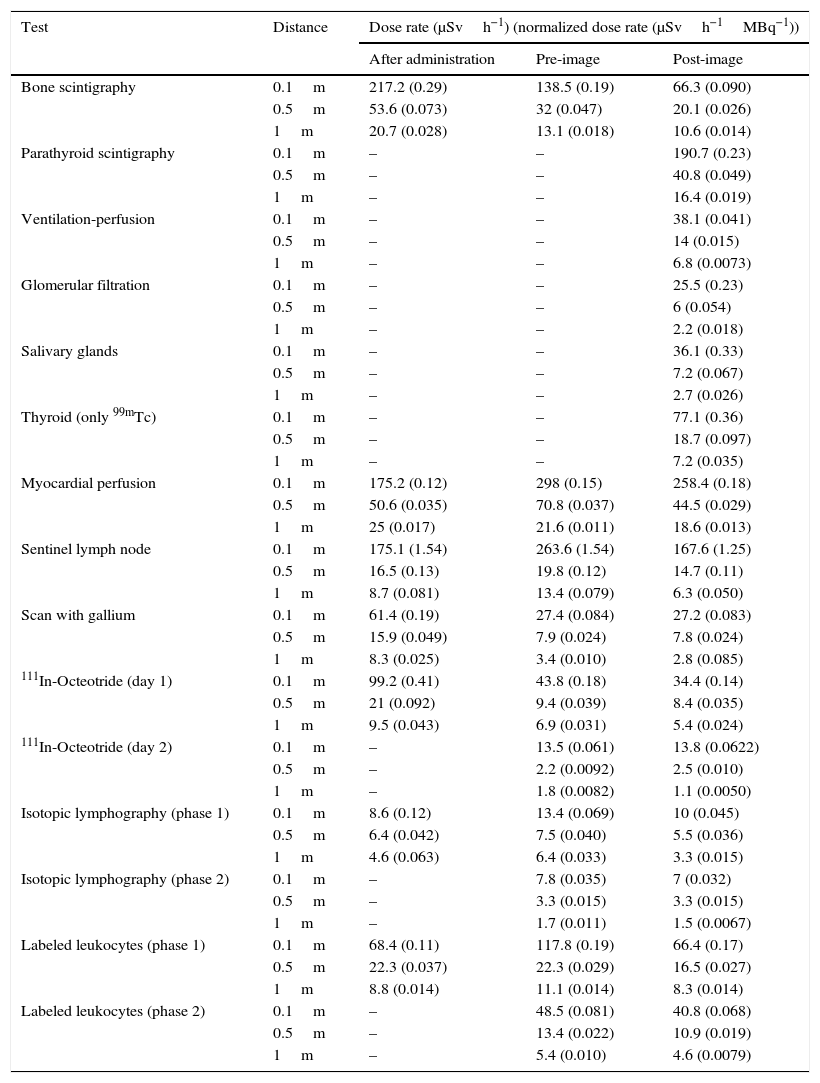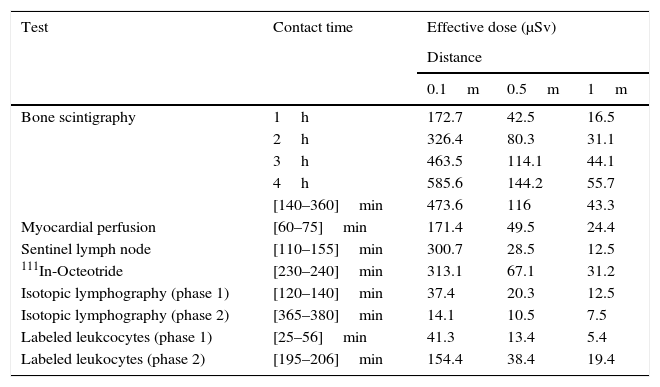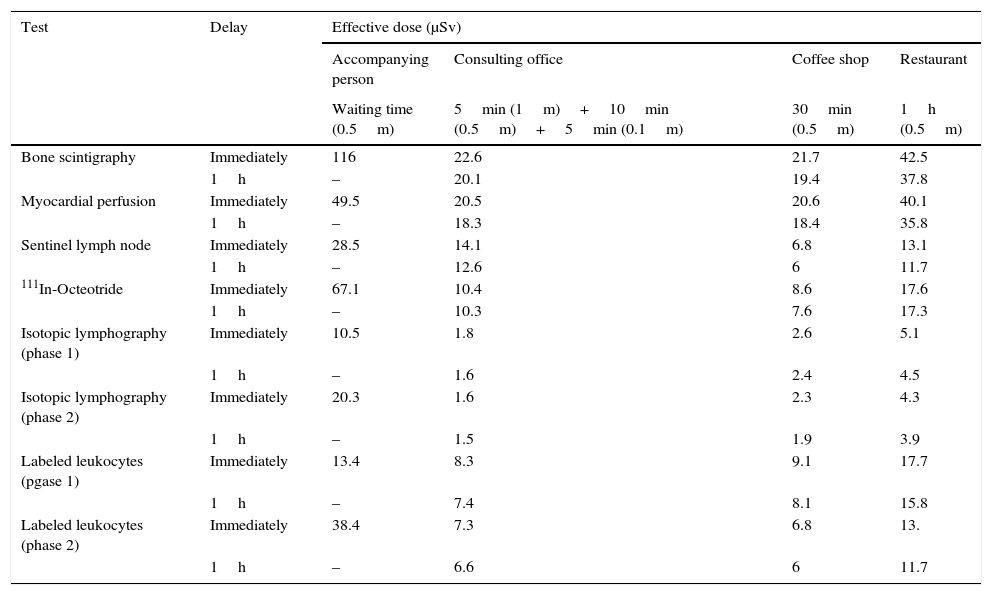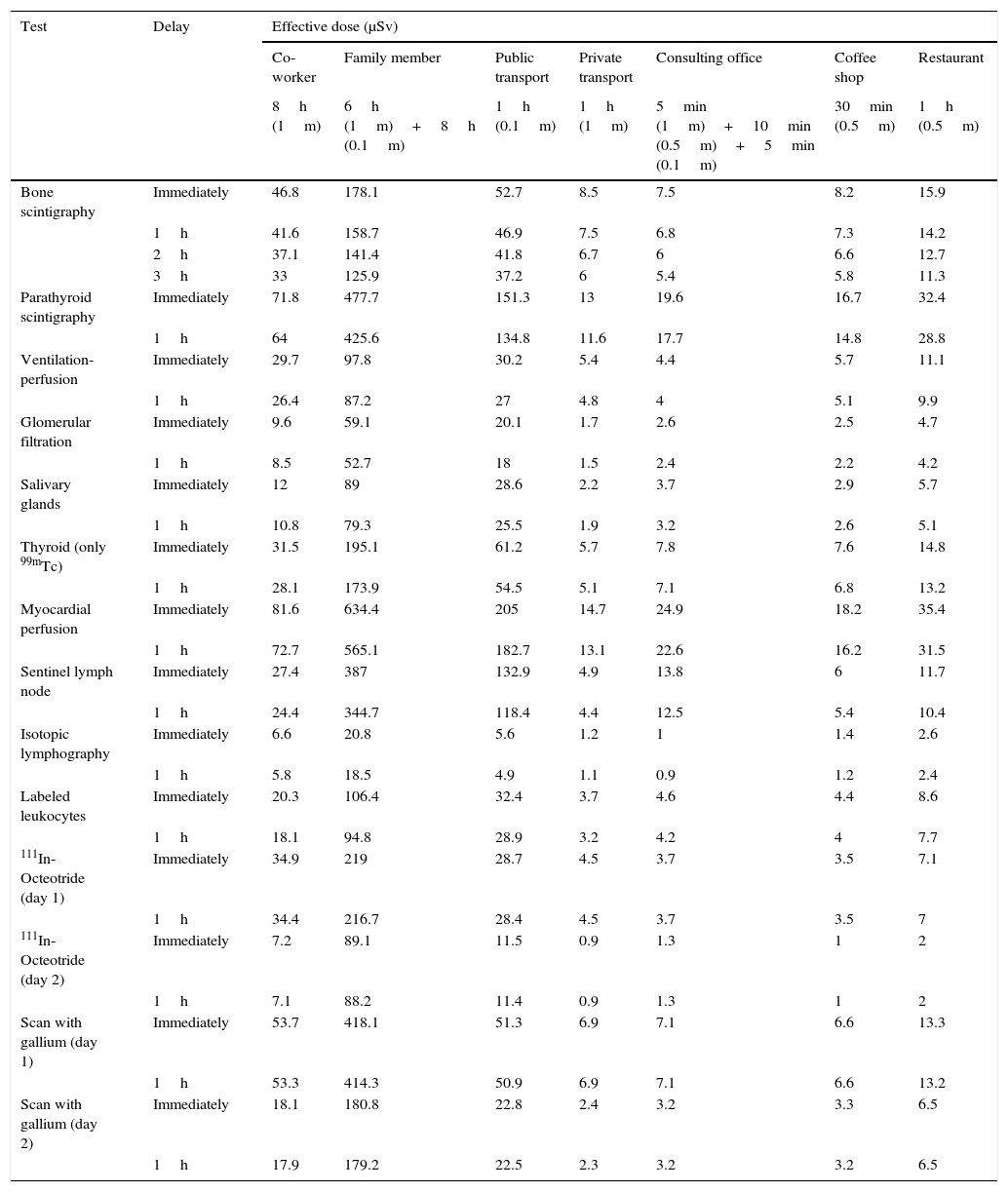The aim of this study was to assess the dose received by members of the public due to close contact with patients undergoing nuclear medicine procedures during radiopharmaceutical incorporation, and comparing it with the emitted radiation dose when the test was complete, in order to establish recommendations.
Material and methodsA prospective study was conducted on 194 patients. H*(10) dose rates were measured at 0.1, 0.5, and 1.0m after the radiopharmaceutical administration, before the image acquisition, and at the end of the nuclear medicine procedure. Effective dose for different close contact scenarios were calculated, according to 95th percentile value (bone scans) and the maximum value (remaining tests).
ResultsDuring the radiopharmaceutical incorporation, a person who stays with another injected patient in the same waiting room may receive up to 0.59mSv. If the patient had a medical appointment, or went to a restaurant or a coffee shop, members of the public could receive 23, 43, and 22μSv, respectively. After finishing the procedure, these doses are reduced by a factor 3. In most of the studies, the use of private instead of public transport may reduce the dose by more than a factor 6.
ConclusionIt is recommended to increase the distance between the patients during the radiopharmaceutical incorporation and to distribute them according to the diagnostic procedure. Patients should be encouraged to use private instead of public transport. Depending on the number of nuclear medicine outpatients per year attended by a physician, it could be necessary to apply restrictions.
Evaluar la dosis que pueden recibir los miembros del público debido al contacto con pacientes de medicina nuclear durante la incorporación del radiofármaco y compararla con la dosis impartida una vez finalizado el estudio, con el fin de establecer recomendaciones.
Material y métodosSe estudiaron 194 pacientes de forma prospectiva. Se midió la tasa de dosis H*(10) a 0,1; 0,5 y 1m tras la administración del radiofármaco, antes de la imagen y finalizada la prueba diagnóstica. Se calcularon las dosis efectivas para diferentes circunstancias de contacto, mediante el percentil-95 (gammagrafías óseas) y el valor máximo (resto de los estudios).
ResultadosLa dosis máxima que recibe el paciente por compartir sala de espera con otro paciente, durante la incorporación del radiofármaco, es 0,59mSv. Si acudiese a una consulta médica, a un restaurante o a una cafetería las dosis a terceros alcanzarían los 23, 43 y 22μSv. Estas dosis se reducen en un factor 3 cuando dicha actividad tiene lugar una vez finalizada la prueba. En la mayoría de los estudios, el uso del transporte privado, frente al público, reduce la dosis en un factor superior a 6.
ConclusionesDurante la incorporación del radiofármaco se recomienda maximizar la distancia entre pacientes y hacer una distribución de los mismos en función del tipo de estudio. Debe fomentarse que los pacientes hagan uso del transporte privado frente al público. Dependiendo del número de pacientes de medicina nuclear por año que reciba un médico en su consulta, puede ser necesario aplicar restricciones.
Article
If you experience access problems, you can contact the SEMNIM Technical Secretariat by email at secretaria.tecnica@semnim.es or by phone at +34 619 594 780.

Revista Española de Medicina Nuclear e Imagen Molecular (English Edition)














